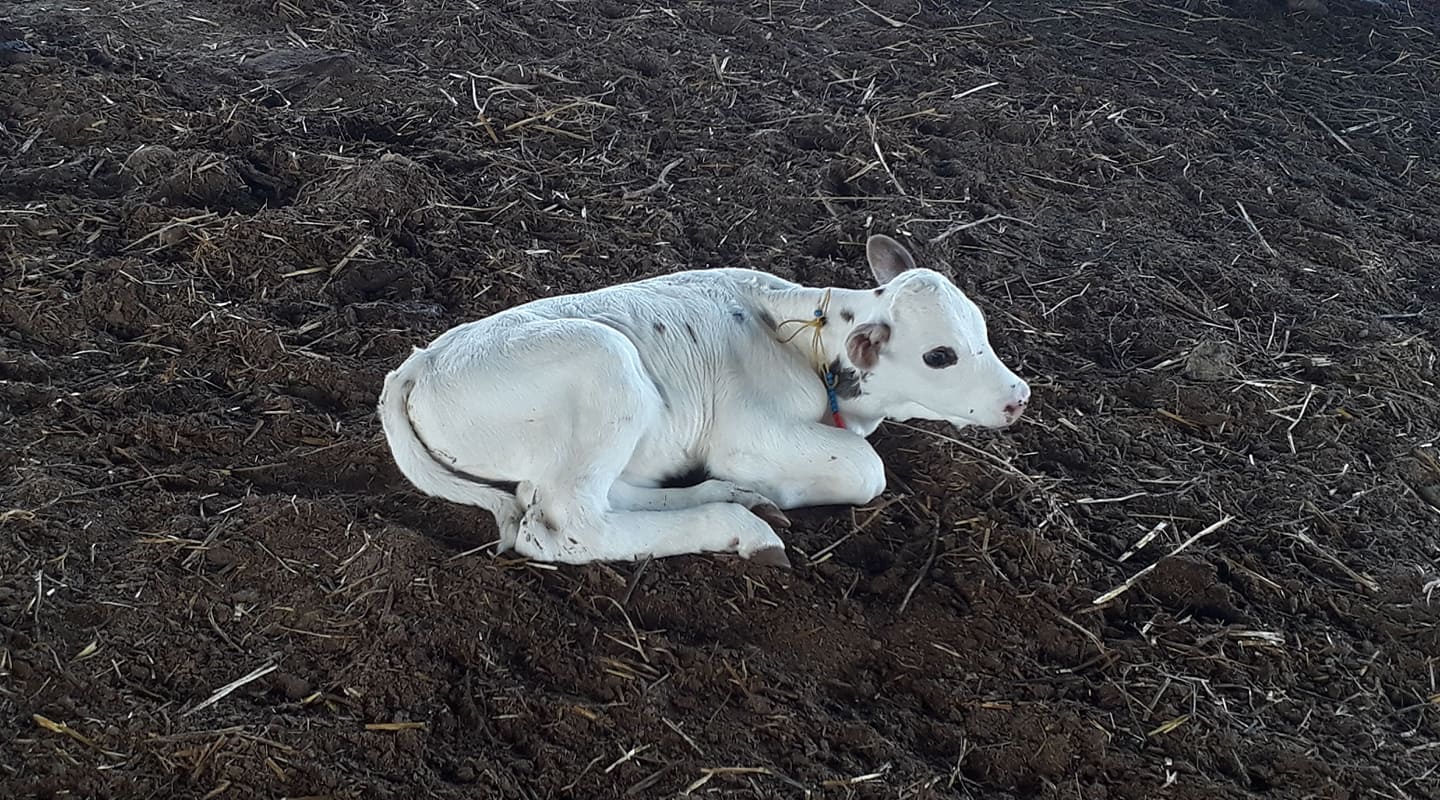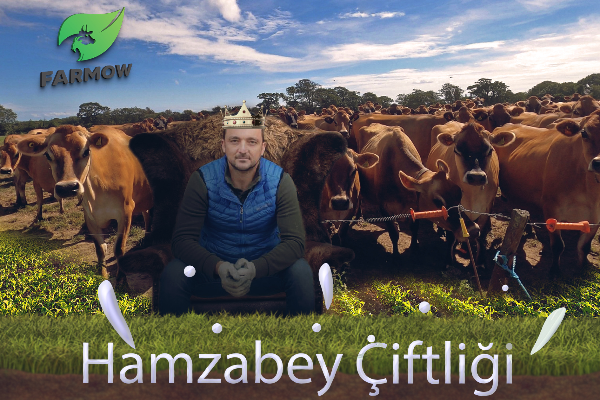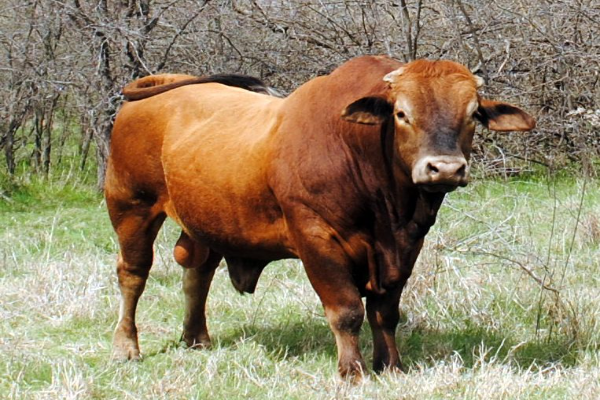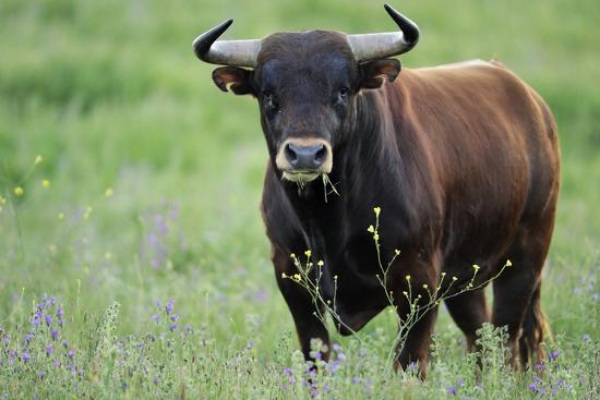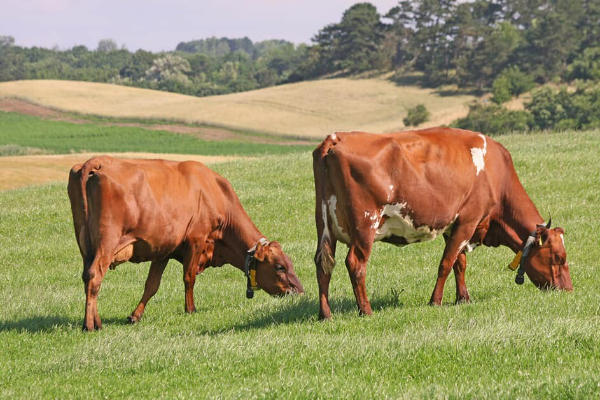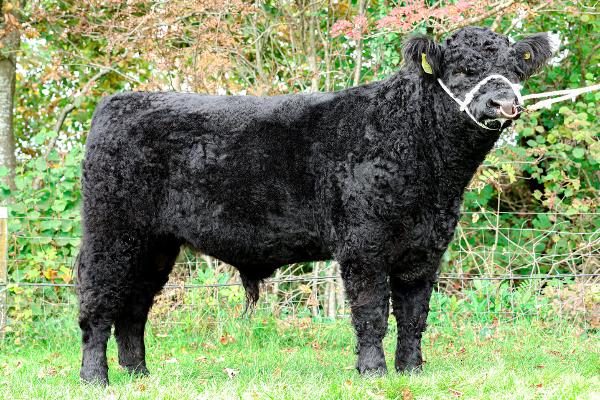Simmental Cattle
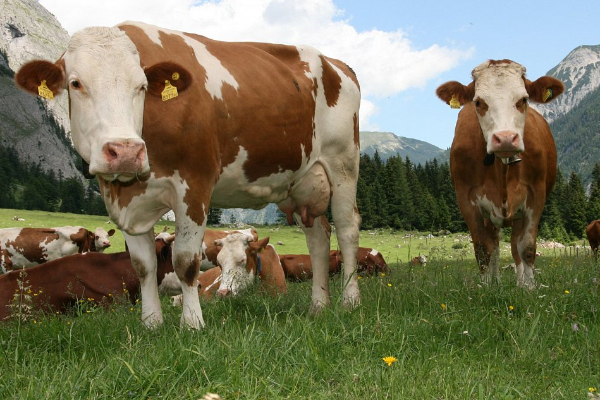
The Simmental name is derived from their original location, the Simme Valley of Switzerland. In German, Thal or Tal means valley, thus the name literally means "Simme Valley".
- The Simmental Cattle breed is known with various names that are as follows:
Fleckvieh Simmental: Argentina
Simmental: Australia, Brazil, Bulgaria, Canada, Colombia, Denmark, France (early 1990s name change from Pie Rouge), Ireland, Mexico, New Zealand, Poland, Sweden, Switzerland, United Kingdom, USA, Zambia, and Zimbabwe.
Fleckvieh: Austria, Germany, Netherland, Spain, Switzerland, and Uruguay
Simmentaler: South Africa and Namibia
Simmentalas: Croatia, Czech Republic, Hungary, Romania, Serbia, Slovakia, Slovenia. Most of these countries use Simmentalas a translation of their local name.
Pezzata Rossa: Italy.
Montbéliarde: A French dairy breed. Member of European Simmental Federation but not of the World Simmental-Fleckvieh Federation.
The Simmental Cattle have
a history that dates back to the Middle Ages. Early records indicate that Simmental
cattle were the result of a cross between large German cattle and a smaller breed
indigenous to Switzerland.
The Simmental Cattle is named after the Simmental–the valley of the Simme river-in the Bernese Oberland, in the canton of Bern in Switzerland.
It
expands from Lenk to Boltigen, in a more or less south-north
direction (Obersimmental), and from there to the valley exit
at Wimmis near Spiez it takes a west-east orientation (Niedersimmental).
Simmental is a Swiss breed of dual-purpose cattle. It is reddish in color with white markings and is raised for both milk and meat.
What Is The History Of Simmental Cattle?
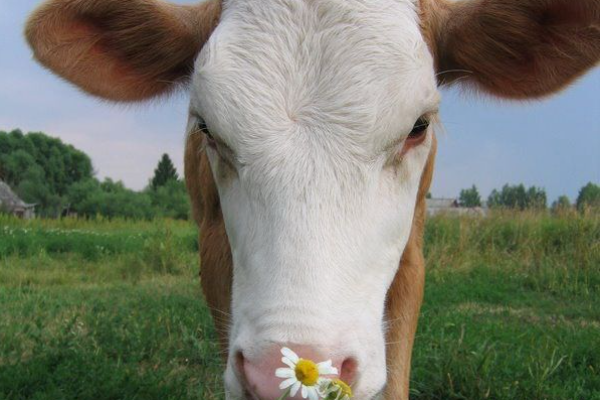
The Simmental is among the oldest and most widely distributed of all breeds of cattle in the world. Although the first herd book was established in the Swiss Canton of Berne in 1806, there is evidence of large, productive red and white cattle found much earlier in ecclesiastical and secular property records of western Switzerland.
These red and white animals were highly sought because of their "rapid growth development; outstanding production of milk, butter, and cheese; and for their use as draught animals." They were known for their imposing stature and excellent dairy qualities.
Since its origin in Switzerland, the breed has spread to all six continents. Total numbers are estimated between 40 and 60 million Simmental cattle worldwide, with more than half in Europe. The worldwide spread was gradual until the late 1960s.
Records show that a few animals were exported to Italy as early as the 1400s. During the 19th century, Simmental was distributed through most of Eastern Europe, the Balkans, and Russia, ultimately reaching South Africa in 1895. Guatemala imported the first Simmental cattle into the Western Hemisphere in 1897, with Brazil following in 1918 and Argentina in 1922. In 1976 they were also shipped to the Republic of China.
The amazing growth of
Simmental cattle in North America are really a reflection of what has already
occurred in most agricultural countries of the world. Presently, the American
Simmental Association registered about 80,000 cattle annually into the
Simmental and Simbrah herdbooks. The
Association ranks among the top four of the U.S. beef breed associations in
annual registrations.
European origin
Selection in Europe was
initially for three features-milk, meat, and as draft animals. The demand for
working animals is greatly reduced today but muscularity and high milk
production are still important to the success of Simmental.
Among the older
and most widely distributed of all breeds of cattle in the world, and recorded since
the Middle Ages, the Simmental breed has contributed to the
creation of several other famous European breeds, including the Montbeliarde (France), the Pezzata Rossa d'Oropa (Italy), and the Fleckvieh (Germany and Austria).
Africa
Namibia (1893) and South Africa (1905) were the first countries outside Europe where the breed was successfully established. Here the breed is known as Simmentaler and is mainly used for beef cattle production under suckler cow systems. Today, the breeders' society is, as far as animal numbers are concerned, the fourth largest of the 32 nondairy breeds in Southern Africa.
The main reasons for its popularity are as follows:
- it can be used with great success in crossbreeding for breeding of both cows with much milk and heavy weaners/oxen,
- a large number of performance-tested bulls,
- comprehensive advice and other breeds improvement services to its breeders, and (iv) animals that do not pass stringent inspection by breed experts are permanently eliminated from the herdbook.
Soviet Union
In the former Soviet Union, the Simmental was the most important cattle breed. Russian Simmental (Симментальская корова) accounted for one-quarter of all cattle in the USSR.
Through extensive crossbreeding, six strains were developed:
- Steppe Simmental (Russian cattle × Simmental bulls)
- Ukrainian Simmental (Grey steppe cattle × Simmental bulls)
- Volga Simmental (Central Russian Kalmyk and Kazakh cattle × Simmental bulls)
- Ural Simmental (Siberian and Kazakh cattle × Simmental)
- Siberian Simmental (Siberian and Buryat cattle × Simmental)
- Far Eastern Simmental (Transbaikal and Yakutian cattle × Simmental)
In 1990, there were 12,849,800 Simmental in the USSR. In 2003, the Simmental count in Russia stood at 2,970,400.
What Are The Characteristics Of Simmental Cattle?
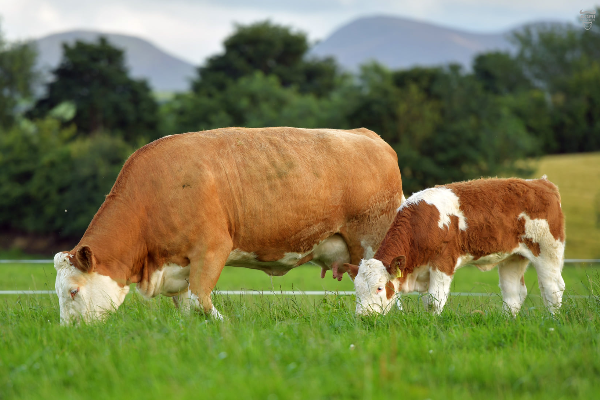
The Simmental has historically been used for dairy and beef, and as draught animals. They are particularly renowned for the rapid growth of their young if given sufficient feed. Simmentals provide more combined weaning gain (growth) and milk yield than any other breed.
The traditional coloration of the Simmental has been described variously as "red and white spotted" or "gold and white", although there is no specific standard coloration, and the dominant shade varies from a pale yellow-gold all the way to very dark red (the latter being particularly popular in the United States). The face is normally white, and this characteristic is usually passed to crossbred calves. The white face is genetically distinct from the white head of the Hereford.
In contrast to countries which allow black and solid brown colored Simmental in the herdbook, Namibia and South Africa only register Simmentaler with the typical color i.e. from dark red or brown to yellow spread over the body in any pattern with at least some white on the forehead and the lower-leg area, solid black or solid red animals are non-existent because they are not registered.
American Simmentals are
colored differently being predominantly black or red like the example photos
below, the lighter colors are referred to as Fleckvieh.
Simmental can be horned
or polled, if horned horns are upturned, another distinguishing feature is
that they have a heavy dewlap. They have a large frame with good muscling with
cows at approximately 135-150 cm tall and the bulls at 150-160cm.
Generations of
selective breeding, with the objective of maximizing milk and beef production
at minimum cost, have created a balanced hereditary proponent that is highly
adaptable, heavily muscled, fine-lined, and well conformed. Docility and good
mothering traits are other characteristics of the breed.
The breed adapts easily
to the most varied conditions from rural small-holder to large extensive
ranching operations.
Simmentals are bred all
over the world for their high beef yields. Inbreeding however it allows
variations in emphasis from mothering ability to beefing qualities. The heavy
muscling, length, and overall size and weight of the animal are combined to
produce a well-fleshed carcass of solid red meat with a minimum of waste fat.
In crossbreeding, the
Simmental has proved very successful. It provides good growth, a large frame, and thus a better beef yield to its crossbred progeny. It improves the quality
of the meat with white fat and excellent marbling. It improves the milk yield,
resulting in the strong development of the calves in suckler herds.
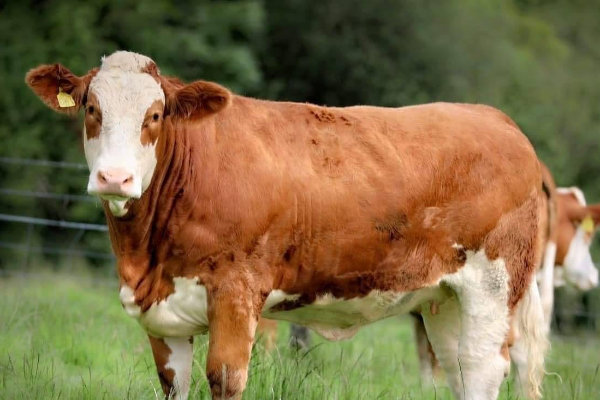
Generic Attributes:
- High, long term fertility
- Longevity
- Calving ease
- Short intervals between calving
- Excellent mothering ability
- Good grazing ability
- Early maturity
- Good growth rates
- Easy to handle
- Feed conversion and efficiency
- Uniformity in type and color
No other breed in the world has such a large within-breed-type variation as Simmental-Fleckvieh which is classifiable in the following types:
- Dairy type like specialized dairy breeds (referring to Swiss Fleckvieh (code SF) with over 55% Red Holstein blood and the French Montebeliard breed)
- Dual-purpose but the major emphasis on milk
- Truly dual-purpose (all cows are milked and bulls excel in weight gain)
- Moderate beef type (suckler, extensive ranching with moderate to small frame size)
- Extreme beef type (suckler, comparable to specialized beef breeds like for example Charolais, large frame size)
What Is the Weight Of The Simmental Cattle?
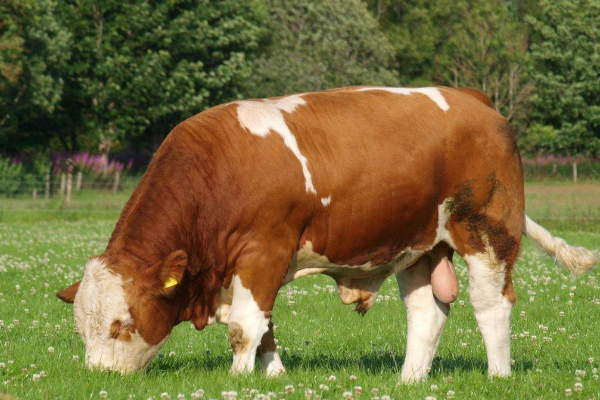
Their weight can vary regarding use but cows can weigh around 700-900 kgs and bulls 1300 kgs.
Sources
http://www.thecattlesite.com
http://afs.okstate.edu
https://en.wikipedia.org
https://www.wikiwand.com

Written by
Researcher Ghost Writer
EditorBreedsMore
IllnessesMore
Forage cropsMore
![]() Патологическая физиология голодания Arina TARAN
Патологическая физиология голодания Arina TARAN![]() Дефицит фосфора (гипофосфатемия) Hipofosfatemi Arina TARAN
Дефицит фосфора (гипофосфатемия) Hipofosfatemi Arina TARAN![]() Какие бывают кормораздатчики для ферм КРС? Irina Makarova
Какие бывают кормораздатчики для ферм КРС? Irina Makarova![]() Кормушки для овец Diana Myakisheva
Кормушки для овец Diana Myakisheva![]() Питание домашних коз: что едят, виды корма и правила кормления Alina Arslantürk
Питание домашних коз: что едят, виды корма и правила кормления Alina Arslantürk![]() Важность минералов питании сельскохозяйственных животных Irina Makarova
Важность минералов питании сельскохозяйственных животных Irina Makarova

